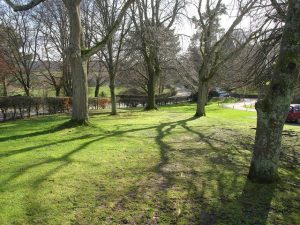– the roots reach deep into the ground to cycle nutrients and store carbon, while above ground, the trees protect crops and animals against the elements.
“This is still an experimental venture in the UK and it could be helpful for people to have a clearer understanding of the various possibilities which fall under this umbrella term.”
.
“Simply put, agroforestry means combining agriculture and trees”:
How farming and forestry could happily co-exist – Vision Group for Sidmouth
Or, as the Soil Foundation puts it:
Agroforestry is a land management approach with multiple benefits. Planting trees on farms can give farmers healthier soil and higher yields – not to mention creating vital homes for wildlife.
What is Agroforestry? | Soil Association
With a really inspired description here:
Agroforestry works because it’s farming in 3D – the roots reach deep into the ground to cycle nutrients and store carbon, while above ground, the trees protect crops and animals against the elements.
Agroforestry can therefore solve many problems of intensive farming in one fell swoop.
Agroforestry has been around for thousands of years, but it’s benefits have often been forgotten. In the future, in the same way as the past, planting trees amongst crops or grazing fields could allow us to achieve ‘sustainable intensification’. This is a way to increase crop yields, while also benefitting the environment in the following ways:
What Are The Benefits? | Agroforestry | Soil Association
These news pages have looked at the practice a little:
Agroforestry: growing not planting trees is the key – Vision Group for Sidmouth
With thanks to a correspondent who has suggested the Soil Association links, which explain simply what is meant by agroforestry and its benefits.
As she says, “This is still an experimental venture in the UK and it could be helpful for people to have a clearer understanding of the various possibilities which fall under this umbrella term.”
One further link she suggests looks at the Benefits, Barriers & Opportunities – with a local example:
 At the Dartington Estate in Devon an innovative three-tiered agroforestry contract has been made between the landowner, farm tenant and local businesses growing top-fruit, elderflowers and Sichuan peppers. The tenant farmers, Jon and Lynne Perkin, were happy to integrate trees into their
At the Dartington Estate in Devon an innovative three-tiered agroforestry contract has been made between the landowner, farm tenant and local businesses growing top-fruit, elderflowers and Sichuan peppers. The tenant farmers, Jon and Lynne Perkin, were happy to integrate trees into their
arable / silage rotation but, as livestock farmers, they lacked the appropriate skills, finance and market knowledge.
By teaming up with established local businesses who plant, manage, harvest and market the tree crops, the farm has gained external investment, supported new entrants to access land, increased the diversity of local crops for local markets and now receives the additional
benefits of integrating trees with their arable production.
https://www.soilassociation.org/media/15756/agroforestry-in-england_soilassociation_june18.pdf
With more here:
.
We go behind the scenes on the South Devon estate with an amazing farming history – Devon Live